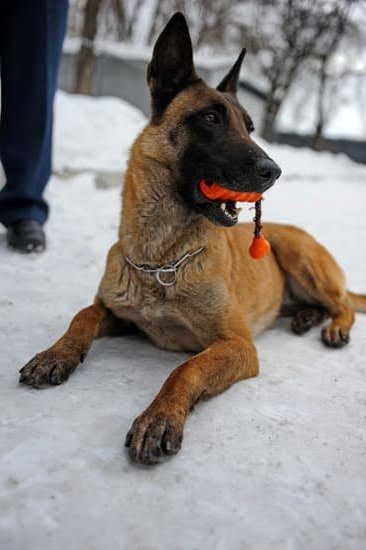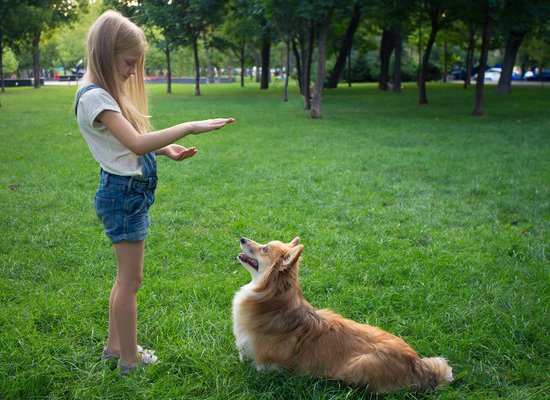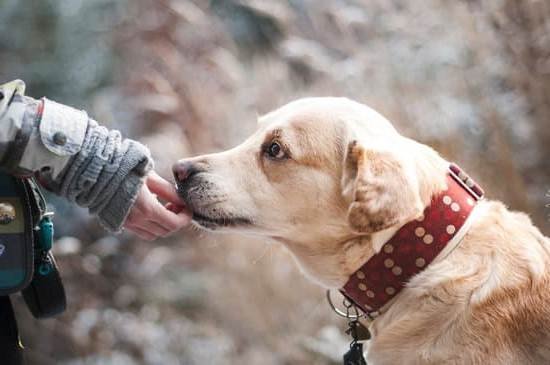Introduction
When training your dog with a collar, there are a few essential rules to follow. First and foremost, ensure that your dog’s safety and comfort are top priorities and the collar is fitted correctly – not too tight or loose. Use commands such as ‘sit’, ‘stay’ and ‘come’ to train the dog, making sure that corrective behaviors such as a leash tug remain within humane limits and do not cause any pain or distress. Always reward good behavior with treats or other positive reinforcement.
It is important that you use consistent language and body language when teaching your pet how to respond to commands. Repetition is key for teaching your pet how to properly respond to commands, so make sure that you practice these behaviors daily. Explain each command in detail using simple instructions before putting the collar on the dog, then while repeating these instructions give your pup verbal cues in combination with physical corrections when necessary. Once your pup understands something clearly he will remain attentive and even eager to please when wearing his collar. When they obey it should be met with praise in order to encourage repetition of good behaviors in anticipation of rewards.
Lastly, always keep sessions brief but effective – around 15 minutes at most – so as not to overwhelm or tire out your pup too quickly, leaving them unmotivated or unfocused at the end of the session which could lead to future problems on their recall. With patience, consistency and plenty of positive reinforcement, you can effectively train any pup with a collar!
Part One
The first step in training your dog with a collar is to select the right collar. The most important factor to consider when selecting a collar is that it should fit snugly, but comfortably, around your dog’s neck. Using a measuring tape, measure the circumference of your dog’s neck and use this measurement to determine what size collar to purchase. It is also important to make sure you choose the right material for your specific dog breed and age as well as their activity level. Leather collars are more durable and are more suitable for active breeds, while nylon collars are lightweight, making them ideal for puppies or less active breeds. Additionally, you may need other specialized features of a collar such as quick release clips if you have an escape artist or reflective material if your pet will be walking outdoors in low light areas.
Part Two
One of the key steps in successfully training your dog with a collar is to establish an effective training plan. First, decide on the commands that you want your pet to learn, such as “sit,” “stay,” “down” and “come.” Once you’ve settled on these basic obedience commands, it’s important to keep training sessions short but consistent and use rewards for good behavior. Before each session, have treats or other positive reinforcements ready so that you can reward proper responses quickly. Always train with calm and slow movements around your canine companion in order for him or her to comprehend what behavior is desired. Additionally, try to stay consistent in the way that you give orders so that your pooch learns how to respond accordingly. When teaching complex behaviors, practice them multiple times before going on to more involved pieces of the puzzle. With patience and repetition during each session, your pet will soon understand what is expected of him or her when given a specific command while wearing its collar.
Part Three
Positive reinforcement is one of the most effective ways to train a dog with a collar. Instead of punishing your pup for their misdeeds, you can use rewards and treats to encourage good behaviors. This type of training builds a strong bond between you and your dog and creates lasting communication patterns. Positive reinforcement also builds trust and helps reinforce commands such as sit, stay, come, down, etc. Rewards are most effective when the timing is consistent; give the reward within seconds of the desired behavior or command (a treat or verbal acknowledgment). Additionally, be sure to vary up the reward to avoid reinforcing only one type of behavior with one type of reward – offering special rewards occasionally will keep things exciting for your pooch!
Part Four
Once you have equipped your dog with the necessary collar, it is time to start training. Before beginning, it is important to ensure that your dog understands basic obedience commands. This could include sitting, staying, coming when called, lying down and more. These are the foundation of good collar training practices, so make sure they are mastered before moving on.
Next, begin introducing the collar itself into your training sessions as a cue for certain behaviors. For example, every time you give your dog a command like ‘sit’ or ‘stay’ and then press down on the tab of its collar while repeating the command or saying “yes!” or another marker phrase, your pup will associate wearing the collar with performing that behavior. It should be rewarded for doing so with treats and verbal praise so it knows it did something right.
It is also important to use the collar in other situations outside of training sessions to solidify its effectiveness as an aid for problem behaviors such as jumping up on people or barking too much. In these cases, simply attach a thin leash to the collar and give a slight tug if you sense problem behavior arising from your pup. This will help remind them that their behavior has consequences and eventually lead them away from any undesirable traits they may have developed.
Finally, remember to always keep your expectations realistic—dogs take time to train and may not respond instantly to all commands they are taught while wearing collars. Remember that patience and positive reinforcement can go much further than reprimand when teaching dogs how to obey commands put forth by their owners through whatever form of training is being used—including collar training.
Part Five
When using a collar to train your dog, it is important to be aware of the common mistakes you should avoid. First and foremost, you should never yank or jerk the collar as this can cause physical harm. Not only will such an action not be effective in training, but it may also traumatize the dog and build a relationship of mistrust between them and you. This type of behavior could lead to a variety of issues that would require expert advice and help from a trainer. Additionally, aside from avoiding physical contact with the collar, you should also ensure not to leave it on for too long. Just like people, dogs need occasional breaks from collars to ensure their comfortability remains at an optimal level. Lastly, it’s important to adjust the tightness accordingly so that your pup does not feel restricted or uncomfortable while wearing it; snug yet comfortable are your best options when adjusting the fit.
Part Six
Using a collar to train your pet is an effective way to start, but there are situations in which you may need to seek professional help. If your dog displays extreme behaviors during their training sessions, such as aggression, fear or anxiety-related reactions, then it is best to consult with a trained animal behaviorist for advice on how to best handle them. Professional trainers will have the knowledge and expertise necessary to determine the root cause of the behavior and develop a plan of action for successfully addressing it within the context of collar training. Similarly, if you do not feel comfortable or confident in your ability to provide training for your dog by yourself, then bringing in an experienced professional can be beneficial. They can help ensure that the training is being done properly and consistently, both of which are essential components of successful results.
Conclusion
Training with a collar is a great way to ensure your dog is well-behaved. It helps to give you more control when training and can also increase your abilities as a trainer, since it requires understanding and sensitivity to how your dog might react. By understanding how and when to apply the collar in a safe and responsible manner, you’ll be better able to communicate with your pup while encouraging positive behavior. The benefits of using a collar with your training are that it teaches self-control, avoids dangerous behaviors like running wild or lunging after other animals, builds trust between pet and owner, creates an overall healthier relationship between pet and caretaker, ensures safety for both pet and owner during walks, reduces barking problems and may even help protect against aggression if used in conjunction with the appropriate commands. Training with a collar should always be completed with supervision, safely monitored at all times. With consistency in practice, patience on the part of both pet and owner can create a sense of cohesiveness between them, allowing both animal and caretaker to feel secure in their shared situation.
Resources
When it comes to training your dog with a collar, there are many resources available to help. Recommended books and videos for collar training include:
1. The Power of Positive Dog Training by Pat Miller – This book provides information on the power of positive reinforcement in dog training and is specifically geared toward those using a collar in the process. It covers topics such as humane methods for teaching basic obedience commands, correcting problem behaviors and avoiding common mistakes when using a collar.
2. Clicker Training: A Positive Method To Train Dogs by Karen Pryor – This book offers an overview of clicker-based methods for training dogs through positive reinforcement, including how to effectively use a collar as part of this process. Step-by-step instructions are provided to help train basic behaviors such as sit, stay and come when called.
3. Techniques For Collar Training Your Dog by Hilary Robinson – This book details how to effectively and humanely train your dog using only a collar while also reinforcing the bond between you and your pup. Detailed instructions are provided on how to teach basic obedience commands with ease and without punishment or force.
4. Dog Training Videos On Youtube – Numerous Youtube videos related to positive reinforcement-based dog training exist, many of which suggest using a collar as part of the process. Consider watching these videos in combination with reading from one or more of the books mentioned above for maximum effect!

Welcome to the blog! I am a professional dog trainer and have been working with dogs for many years. In this blog, I will be discussing various topics related to dog training, including tips, tricks, and advice. I hope you find this information helpful and informative. Thanks for reading!





